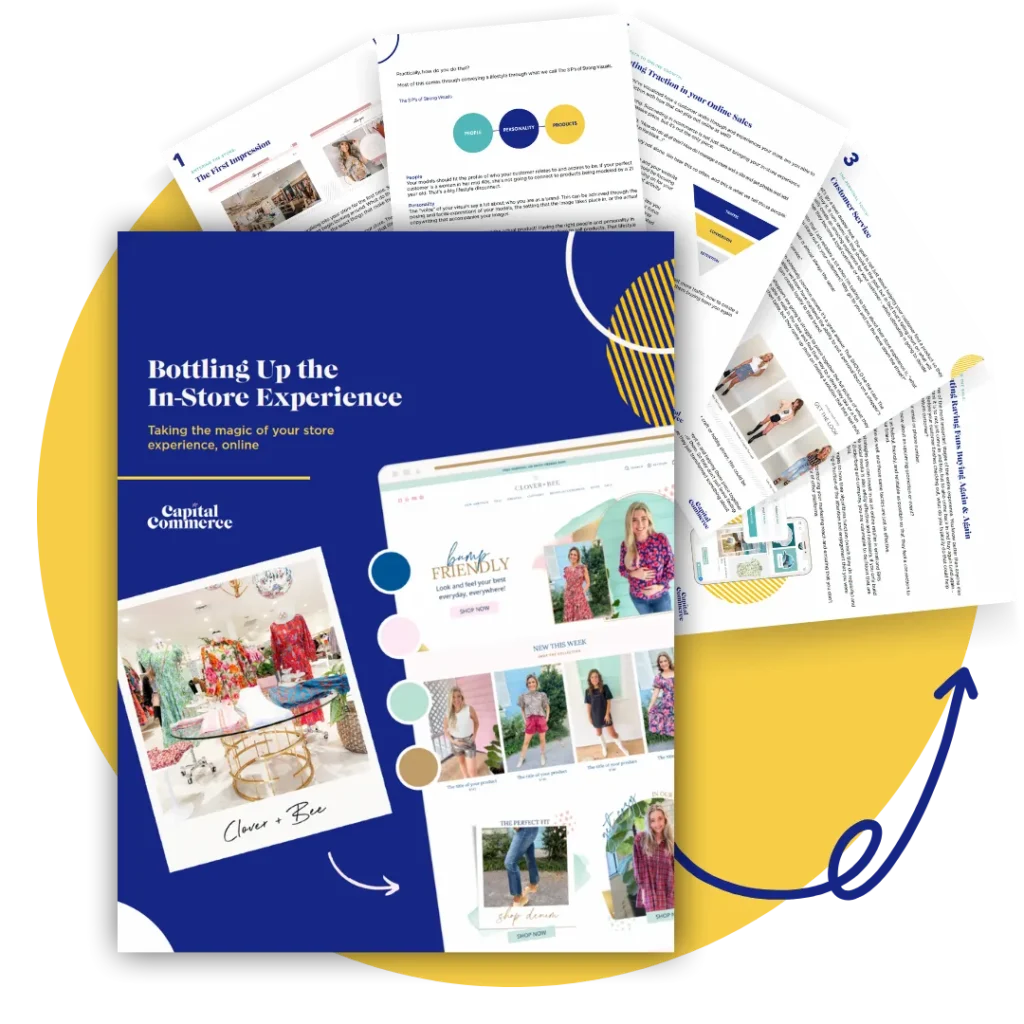This article is part of a 2-part series on succeeding in eCommerce.
- Part 1: How To Improve YOU In Order to Grow Online
- Part 2: You Are Here :)
——
When you think about your business, have you ever wondered what makes some customers follow through with a purchase while others leave empty-handed? It can be a frustrating issue to figure out, especially on the slow days or even months when no one seems to be interested in what you’re selling.
Your customers are the lifeblood of your business, so understanding what motivates them to make a purchase is essential for success. While there may not be a button to press that transforms your business into one that immediately attracts a raving customer base, there are three ingredients you should look at to ensure you have the foundation to grow your business into one that becomes successful.
The three ingredients in order are:
- You as an entrepreneur
- Your customers
- Your Brand
It’s important to first start with you as an entrepreneur. When thinking about yourself in your business, the first step is to define what success means to you more than just thinking about the revenue goal. Then, you can develop a strategy around what it looks like to become the entrepreneur capable of running that business. You can read more about how to become an entrepreneur capable of running a successful business here.
In this blog post, we will dive into the second ingredient which is understanding exactly who your perfect customer is and how your business can profit from this.
Your Perfect Customer
Think about when you walk into a store. You typically get greeted, you see things, you might smell things and that is all designed to make you feel a certain way. Now, if you think about a store that you recently went to, they probably greeted you and you felt a certain way. What specifically did you fee? If you were their perfect customer, of course, you probably felt welcome, but deeper than that, we want to make people feel like they are in the right place.
While in a store setting, a lot of retailers are very talented at being able to make anyone feel welcome. You could serve girls in their younger twenties and an older gentleman walks in but you are talented enough at what you do to make him feel like he’s still in the right place.
But online, it’s a little harder. Our brains are wired to know if we are either in the right place or not as soon as we walk into a room. When we land on a site, our brains make that decision in less than a second. We either click the back button or, we feel like what we see is for us and decide to stay and shop around. This is one of the core problems that we see people make online is that they don’t build that connection. The way to do that starts with identifying your perfect customer.
One way we advise our clients to figure out who their perfect customer is is to start by creating a character of who this person is. This will include the basic areas such as their demographic, age, and income. However, we also want to dive deeper into that. There are two sides to this, so we will introduce you to the same framework we take our clients through and share something we teach in our in-person and online event called Manifest that will help you understand who your perfect customers are.
Why You Need Just One Perfect Customer
Before we move forward, we want to address something that comes up quite often. This is where retailers say “I don’t have one perfect customer, I serve everyone” or “I serve moms and daughters” etc. If we use the mother-and-daughter analogy, most of the time the retailer isn’t actually serving both moms and daughters. They serve a mom and sometimes the daughter is also able to find things they like too. Or they serve the daughter and the mom is the one with the credit card.
This is a helpful realization to have because instead of trying to buy for a 25-year-old and a 55-year-old you could realize that your target audience is actually young moms in their mid-twenties. This would impact how and what you buy, and how you are marketing your products. This enables you to create a truly incredible experience for a certain person rather than trying to be everything to everyone and giving no one a unique personalized experienced.
The term you may have heard is the riches are in the niches. This might seem like a counterintuitive thing as you may assume that you make more money by serving everyone, but the opposite has been proven to be true. The more niched down you are and the better you can serve a specific group of people, the more you will grow. Now we can move into the framework we take our clients through.
How To Discover Who That Customer Is
The process we take our clients through is broken down into three parts. The first is the one we talked about earlier where we want to know who the perfect customer is. This is the basic information like their age, demographics, income, and marital status. This step starts to help you understand who you should have modeling your products or what the imagery should look like on your site.
Then we want to go a level deeper. We want to know how your perfect customer shops for what you sell. What questions do they ask? What things are they looking for? How do they talk about the products? Are they trend based or are they comfort-based? Essentially this step is geared around figuring out how your perfect customer would think and interact with your products.
The third level goes even deeper and in this step, we want to know what your perfect customers’ deepest desires, hopes, and fears are. When you’re writing content for your site, this level of understanding will help you do that.
The next step in this two-part process is a framework. It’s an acronym created by Josh Orr, founder of Streamline Retail, and Tara Austin, owner of Ruthie Grace, at their they host every year called Manifest. This acronym framework they created is called D.E.V.E.L.O.P. It’s an exercise that can be done on a regular basis to help you tune in to who your customer is.
The first step is demographics. Again, this is their age, income, marital status, whether they have kids, and whether they work or not. These are just objective facts. Then we move a level deeper and we get to their ecosystem.
The ecosystem is asking, what is their world like? What podcasts are they listening to, and what Instagram accounts do they follow? When they open Facebook what do they see or what are they interacting with? Do they read blogs, if so what blogs are they reading? What news sources do they watch? Figuring this out can help you understand what’s happening in their world and hint at what language to use when marketing.
Next is value. Values are the deeper beliefs that guide everything we do. There are two types of values. The first is aspirational values. These are the values we typically say that we have such as faith, family, etc. but then we have the values that we actually live out. We want to understand the two sides of values our customers have so our marketing can directly speak to them.
The next letter stands for elevate. This is to think about what elevates your customer’s status. Status means something different to everyone. For some customers, it could be that they want to be seen with an expensive car, a name-brand watch, the newest technology, etc. and that will make them stand out and above their friends. However, for others, it could be that they want to drive the safest car, or they don’t care about brand names and just want something reliable. Even though they want different things both desires will still act as status for them with their peers. We want to think about what actually elevates their status to them.
Then comes language. How does your customer talk? How do they complain about things? How do they brag when they are around their friends? How would they describe it if they were to text a friend about the dress they bought from you? When we can understand our customer’s language that will change the way we write our emails, our social posts, our product descriptions, our headlines, etc. All of these things will be impacted when we start to use our customer’s terminology.
The next step is opportunity. What are their hopes and goals for the future? This will include their short-term and long-term goals. An example of a short-term goal could be that they want to be in shape, they want to go on a Disney vacation with their family next year, etc. Some examples of long-term goals could be owning a vacation home, still having a great relationship with their kids when they move out of the house, etc. We want to understand both of these sides because all of marketing either pushes towards pleasure, pushes towards our goals, or it pulls away from failure or pain.
The last step is pain and pleasure. We want to identify what does pain and pleasure mean to your customer. This can be what they are scared of or trying to avoid. Where does pleasure come from for them? Some of this can be related to status. We want to identify what is specifically painful or pleasurable for our perfect customer because sometimes what is painful to one person is seen as a pleasure to another. For example, a person who likes a relaxing vacation isn’t going to enjoy a trip with a lot of excursions with little to no time to rest. On the other hand, someone who is all about exploring and taking risks will hate to lounge by a beach for a week straight. By thinking through these different steps we can start to shape this persona.
Wrapping Up
By understanding who this one perfect customer is for you, you can design your site, plan your social posts, write emails, buy products for them, and ultimately create a stronger brand experience that will resonate and attract more dream customers. This can be one of the most impactful things you can do for your business. Make sure you keep reading the final ingredient in what makes up a successful retail business. You can read the final step here.
If you want more helpful tips be sure to subscribe to our founder and CEO, Josh Orr’s podcast, Retail Initiative. This is a podcast for independent retailers looking to gain insight and tactical advice on how to grow their business online. You can find it on Apple Podcasts or Spotify.




